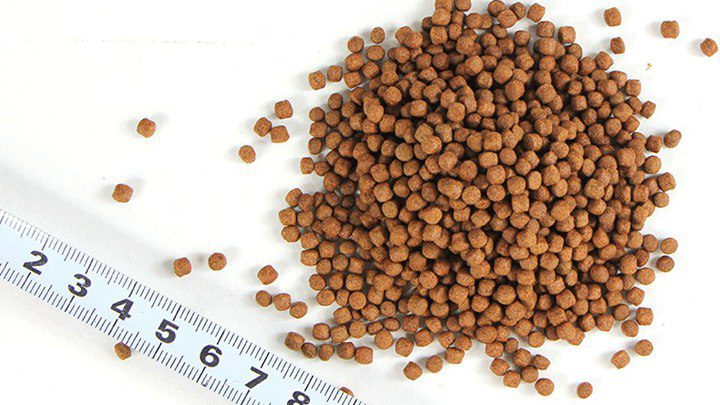In recent years, with the increasing popularity of high-yield fish farming, the use of full-price pellets for fish in fishery production has become very common. However, due to the many feed brands on the market, and there are great differences in quality and grade, the majority of fish farming The user cannot judge the quality of the fish feed. This article introduces a simple method to judge the quality of fish feed using the senses. Namely:’One look, two smells, three twists, four foams, five chews’ for your reference when choosing pellet feed.
Lima feed machinery has been working in the feed farming industry for more than ten years, as the professional manufacturer and exporter of feed equipment. We specialize in the production of fish feed extruders, poultry feed pellet machines, and corresponding production lines. If you have any questions about the feed pellet industry, please feel free to contact us.
1. Look
- Look at the color: The pellet feed for fish is made of several main raw materials such as fish meal, soybean meal, cotton meal, rapeseed meal, secondary meal, meat and bone meal, etc., which are uniformly mixed and granulated in a certain proportion. The color of the finished product can reflect the number of raw materials used to a certain extent. If there are more fish meals and soybean meals, the color of fish material will be slightly yellow; if there are more miscellaneous meals, the material color will be dark red; if there are more sub-meals, the material color will be slightly gray and so on.
- Look at the particle size: Fish feed is the pellet formed after the pelleting process. By observing the particle size, it is possible to judge the ratio of the original particles, the fineness of the original particles, the uniformity of quenching and tempering, the granulation process, and the selection of the ring die. The grain size of high-quality fish feed is uniform and smooth, the section is neat, the length is 1.5-2 times the diameter, and the powdering rate is not more than 1%;
- Look at the gloss: The surface of the pellets of high-quality fish feed is smooth, uniform, and shiny. Such feed has good palatability, storage durability, and a high utilization rate. The surface of inferior fish feed is rough and dull.
- Look at the sinking speed: When feeding pelleted fish feed, it is necessary to ensure that the feed has a certain buoyancy and sinking speed. The fish eat on the surface of the water body, which not only saves the feed but also facilitates the observation of the fish’s feeding situation. Generally, fish feed should be guaranteed to float on the water surface for 3 to 4 seconds. If the water sinks too fast, the fish will not have time to eat, which will cause waste; if the floating time is too long, it proves that the feed contains more crude fiber and is of poor quality.
2. Smell
Pellet fish feed is made by mixing various raw materials and then steam conditioning and maturation. After the raw materials are matured, they will emit a unique fragrance. Grab a handful of the freshly opened bags of feed and smell it in front of your nose.
If you find moldy, bitter, burnt, artificial fishy, raw fish meal, and raw flour flavors, it indicates the following problems during processing
(1) Poor quality of raw materials; (2) Excessive moisture content, and deterioration during storage; (3) The tempering temperature is inappropriate.
3. Twist
Fish feed needs to be transported many times from production to feeding, and objectively requires a certain degree of mechanical strength. Under normal circumstances, a few twists with your fingers do not break, but it should not be too hard. If the feed is broken with one twist, it means that the feed is not hard enough, and the powdering rate is high during transportation, which is easy to cause feed waste; the hardness is too large and the palatability is poor, which affects the movement of the feed in the digestive tract and easily causes fish enteritis.
4. Bubble
Putting the feed into the water soaks it, on the one hand, it can check whether the physical properties of the feed can meet the needs of the fish’s digestive tract. On the other hand, the approximate composition of the raw materials can also be analyzed. The specific method is to grab a handful of feed and put it in the water and observe the time for the feed to disperse. Generally, the feed is completely dispersed after 3-5 minutes. If the dispersal time of the feed is too short, it will easily cause the fish’s digestive tract to swell and affect its food intake. ; The feed disperses for too long, which affects the intestinal peristalsis of fish, and is not conducive to fish digestion and absorption.
5. Chew
Although the fish feed is swallowed, the quality of the taste is the main factor that affects their feeding behavior. Through the touch and taste of our oral cavity, we can feel the hardness of the pellets and the presence or absence of peculiar smell, whether the feed has deteriorated, whether the feed is mixed with impurities such as sand, soil, and so on.
